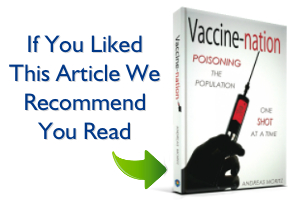By Andreas Moritz
Before I illustrate how vaccines cause, and not prevent disease, let us first define ‘disease’ in the context of vaccines and immunity.
It has long been known that in some illnesses such as measles, chickenpox and scarlet fever, one bout of the illness usually provides lifelong immunity. A second experience with measles or scarlet fever is extremely rare. Why is that so? That is because nature has gifted the human body with wonderful natural armor – an in-built immunity – that protects the body by kicking in after a bout of a particular disease.
Till modern science unraveled the secrets of the immune system, the concepts of medicine formulated in the 19thcentury were in part based on the understanding of medicine by the ancient Greek physician Hippocrates. According to Hippocrates, an illness manifests itself as signs and symptoms that travel from the inner vital organs and blood circulation to the outer surface of the body. These outer symptoms manifest themselves as visible symptoms such as a rash or discharge of blood, mucus or pus.
This ‘throwing off’ of an illness was considered a natural healing response which returned the body to a state of balance or equilibrium. And it took place only after the inner poisons produced by the disease were cooked and digested (pepsis) during the inflammatory process. Hippocrates’s astute observations were further developed by modern science, which later uncovered the actual mechanisms of infection, inflammation and healing on these very same lines.
Disease symptoms can indeed be caused by pathogens such as bacteria and viruses. But we have also been led to think of them as enemies that we need to battle. The fact is that disease does not begin when we are exposed to or are infected with a bacterium or virus. It begins when the body begins to respond to a pathogen or the inflammatory-infectious process that it sets in motion. This means that disease equals healing, which is the body’s way of returning to a balanced condition (homeostasis). Disease is a sure sign that the body is engaged in correcting an underlying condition that is otherwise unfavorable to its efficiency and survival.
It is critical to understand this because it turns on its head the very foundation on which vaccination theory rests. The human body’s inflammatory response to disease is, in fact, a healing process. Symptoms of disease are the body’s attempt to deal with accumulated toxins, waste matter, and weakened or damaged cells. The so-called pathogens appropriately assist the body in destroying and eliminating such potentially harmful materials from the system, and return the body to a healthy state of equilibrium.
Also, the magnitude of the body’s response, or the severity of illness, is not only influenced by the magnitude of the resulting infection but also by the stamina of its immune system.
The healing force employed by the body is, in turn, influenced by a variety of factors such as the individual’s emotional state, spiritual foundation, diet, lifestyle, environment, etc. It definitely does not depend on whether we have been vaccinated against infectious agents.
If the immune system is weak, the body becomes congested and toxic, or vice versa. As a result, pathogens are likely to invade the body and start the detoxification process (disease), although the majority of germ ‘invasions’ occur silently, without ever disturbing us. Think about it. The human body is exposed to a multitude of pathogens every day, some of them agents of (presumed) deadly diseases. If germ invasion were synonymous with disease and death, most human beings would not survive very long.
——————————
This is an excerpt from my book VACCINE-NATION: POISONING THE POPULATION, ONE SHOT AT A TIME
——————————
You may share or republish this article provided you clearly mention the name of Andreas Moritz and paste a hyperlink back to the web page

